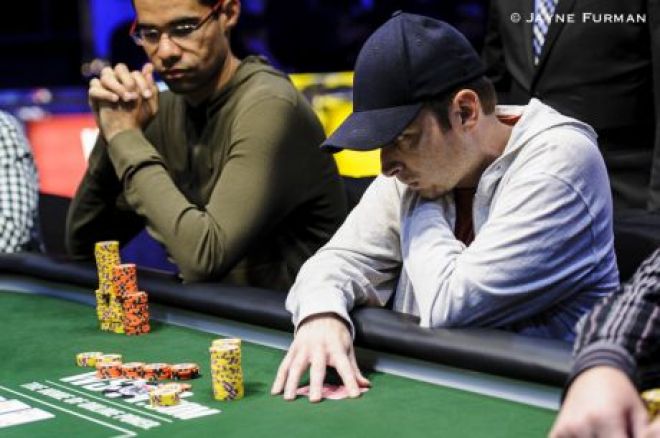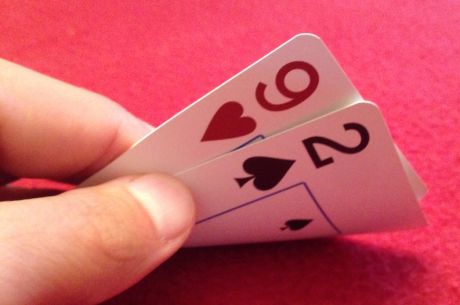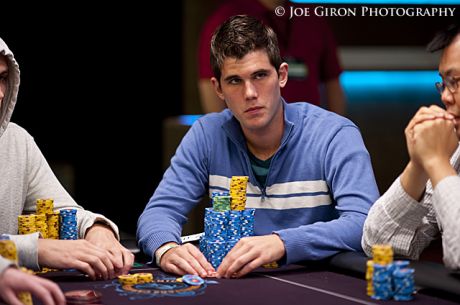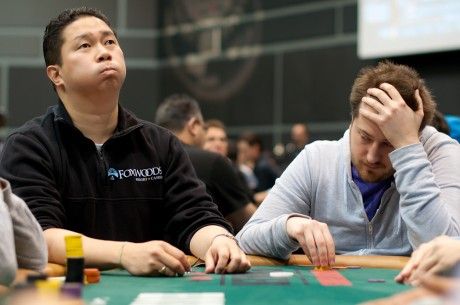Thinking Poker: When is the “Big Move” Coming?

If you play big-bet poker, and especially if you play no-limit hold’em tournaments, you probably spend a lot of time wondering when your opponents are getting ready to make a big move.
If you play well, you won’t be thinking in terms of a “big move” for which you have to figure out the timing. You will simply take every hand as it comes and play it as well as possible, whether that entails a passive line or a huge bluff.
Your best opponents will think similarly. They don’t divide strategies into “standard play” and “big moves” either, so it’s misguided to try to figure out which of those two buckets they’re pulling a strategy from in a particular hand.
Many of your weaker and less experienced opponents, however, do think this way. They keep a sort of mental inventory, and in that inventory is a stock of “moves” or “plays” or “times out of line.” They think about their big bluffs and semi-bluffs as opportunities to dispense items from that stock. It’s as if they’re spending a sort of currency.
Recognizing this way of thinking can help you understand why many players don’t run bluffs twice in a row. It’s not just because they fear they are known bluffers who will get called down. It’s also because it seems to them that their bluffing “budget” is spent.
If you are playing against this type of opponent — and there are lots of them out there — it is, in fact, important to think about timing. When is the big move coming?
These “big moves” vary from player to player, of course. After all, any number of psychological and other factors can determine the timing of a bluff. That said, there are a few principles to keep in mind that can help you anticipate these moves and react appropriately.
Against weaker players who, consciously or not, consider themselves to have a quota of “big moves,” you are often more likely to see certain familiar circumstances arise to indicate such a move might be likely. For example...
1. Big moves happen... when players have fallen below some stack-size benchmark
Many players are likelier to make their moves when they’ve fallen just below a starting tournament stack, their high-water mark for a session or a tournament, or a stack size that they had for a long time and therefore grew to identify themselves with.
One reason for this is pain. Falling below a salient stack size makes people feel like “losers.” Feeling like a loser causes pain for a lot of players, and some players react to feeling pain by making moves.
There are other reasons for this effect, though. An important one is that when players are already losing (relative to some benchmark), losing more doesn’t feel as bad as recovering feels good. Even if the chip EV of a play is negative, the psychological risk-reward can be much better. (For much more on this sort of effect, see Daniel Kahneman’s Thinking, Fast and Slow, which I consider the best popular social science book I’ve ever read.)
2. Big moves happen... when there is an obvious justification for the play
If your opponent thinks in terms of “big moves,” he probably fears embarrassment at the table and considers getting caught bluffing embarrassing. But there are ways to mitigate that embarrassment, and one is to cite a justification that anyone can see for your play.
One such justification is having a draw. Of course, under certain circumstances, playing a draw very hard is just standard play and not a big move. Even so, sometimes people will choose their drawing hands for big moves. They think their peers generally think it’s okay to drive the action with draws.
Another “obvious” justification is being up against a loose player. You will sometimes hear people say: “I know he never has anything; that’s why I thought I could get him to fold.” They aren’t saying this to be rude (although it is rude) — they’re saying it to justify their play and avoid embarrassment.
3. Big moves happen ...after dinner
For whatever reason — perhaps because they are energized, perhaps because they’ve had time to scheme — dinner breaks of tournaments will embolden many of your opponents. If you have a very close after-dinner decision, and if your opponent is a player you suspect fits the profile under discussion here, consider the possibility that he might be making the move he’s been waiting all day to make.
Those are three common signals I’ve seen to indicate the stage has been set for such “big moves” to come from a certain type of player. As I say, not all players think in such terms, and the better ones tend not to do so. But with players who do, it can be worthwhile watching for the signs that a “big move” might come.
Be sure to check out Nate and Andrew Brokos on the Thinking Poker podcast, and for more from Nate visit his blog at natemeyvis.com.
Get all the latest PokerNews updates on your social media outlets. Follow us on Twitter and find us on both Facebook and Google+!








